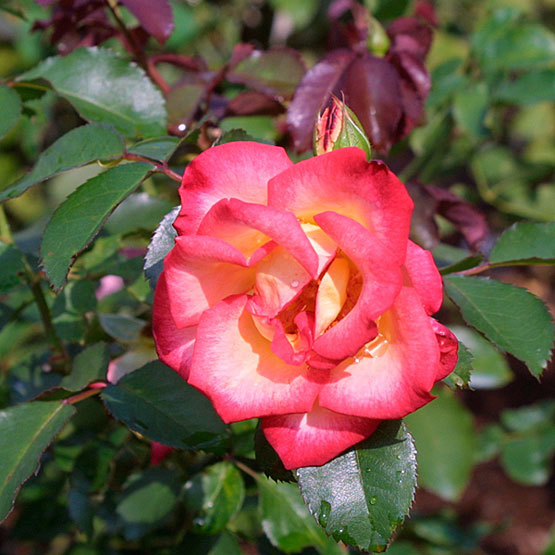
Roses are divided into 150 or so species, some of which have been garden plants for many centuries. Stems are often prickly or thorny and can be erect, arching, scrambling, or trailing. Flower form may be flat, cupped, rounded, high-centered, urn-shaped, rosette-shaped, quartered-rosette, or pompon. Flowers are often fragrant and range in color from white to nearly black. Species and cultivars are divided into old garden roses (in existence before 1867) and modern roses. Each division has many subgroups. There are many thousands of cultivars. Grow roses as specimens, in the border, as hedges or climbers, in the rock garden or cutting garden, or in containers. They can fill pretty much any garden need.
Noteworthy CharacteristicsSome species have been used in gardens for hundreds of years. Roses produce beautiful, fragrant flowers that are often good for cutting and that work well in a variety of garden situations.
CareEven though many consider roses to be high-maintenance plants, in reality they can tolerate a wide range of conditions. They usually prefer an open site in full sun, however. They grow best in moderately fertile, moist but well-drained soil that is rich in humus. Plant in early spring or late fall. Suckers should be removed from rootstock. Plants flower best with regular feeding.
PropagationSoftwood cuttings can be taken from the time of the first bloom in spring to summer, but take hardwood cuttings in fall. Bud in summer. Sow seed in containers in fall.
ProblemsRoses are susceptible to a wide variety of pests and diseases, including aphids, leafhoppers, spider mites, scale insects, caterpillars, sawfly larvae, Japanese beetles, rose stem girdlers, thrips, rose chafers, rose midges, rose slugs, leaf-cutting bees, black spot, rust, powdery mildew, dieback, canker, crown gall, viruses, and downy mildew. Deer and rabbits can munch on plants.































